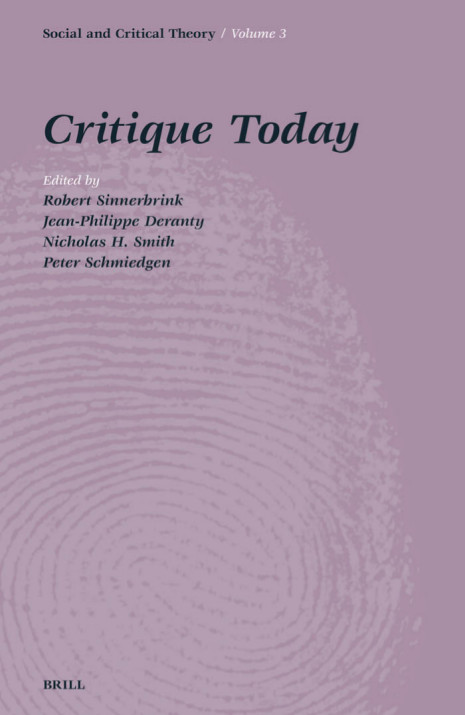Fiona Cameron, Sarah Kenderdine (eds.): Theorizing Digital Cultural Heritage. A Critical Discourse (2007)
Filed under book | Tags: · archive, critical theory, cultural heritage, digital heritage, memory

In Theorizing Digital Cultural Heritage, experts offer a critical and theoretical appraisal of the uses of digital media by cultural heritage institutions. Previous discussions of cultural heritage and digital technology have left the subject largely unmapped in terms of critical theory; the essays in this volume offer this long-missing perspective on the challenges of using digital media in the research, preservation, management, interpretation, and representation of cultural heritage. The contributors—scholars and practitioners from a range of relevant disciplines—ground theory in practice, considering how digital technology might be used to transform institutional cultures, methods, and relationships with audiences. The contributors examine the relationship between material and digital objects in collections of art and indigenous artifacts; the implications of digital technology for knowledge creation, documentation, and the concept of authority; and the possibilities for “virtual cultural heritage”—the preservation and interpretation of cultural and natural heritage through real-time, immersive, and interactive techniques.
The essays in Theorizing Digital Cultural Heritage will serve as a resource for professionals, academics, and students in all fields of cultural heritage, including museums, libraries, galleries, archives, and archaeology, as well as those in education and information technology. The range of issues considered and the diverse disciplines and viewpoints represented point to new directions for an emerging field.
Contributors:
Nadia Arbach, Juan Antonio Barceló, Deidre Brown, Fiona Cameron, Erik Champion, Sarah Cook, Jim Cooley, Bharat Dave, Suhas Deshpande, Bernadette Flynn, Maurizio Forte, Kati Geber, Beryl Graham, Susan Hazan, Sarah Kenderdine, José Ripper Kós, Harald Kraemer, Ingrid Mason, Gavan McCarthy, Slavko Milekic, Rodrigo Paraizo, Ross Parry, Scot T. Refsland, Helena Robinson, Angelina Russo, Corey Timpson, Marc Tuters, Peter Walsh, Jerry Watkins, Andrea Witcomb
Publisher MIT Press, 2007
ISBN 0262033534, 9780262033534
465 pages
Keywords and phrases
virtual heritage, digital art, virtual reality, Net art, taonga, Powerhouse Museum, haptic, Lev Manovich, media art, Maori, polysemic, Geser, locative media, SFMOMA, Archaeology, Dublin Core, DigiCULT, multimedia, museological
PDF (updated on 2012-8-12)
Comments (3)Sinnerbrink, Deranty, Smith, Schmiedgen (eds.): Critique Today (2006)
Filed under book | Tags: · critical theory, critique, philosophy, poststructuralism

What are the tasks and potentials of critical theory today? How should we critique the present? Critique Today brings together a variety of perspectives in critical social philosophy that question our social and historical constellation. It includes contributions by Genevieve Lloyd, Shane O’Neill, Paul Patton, Paul Redding, Emmanuel Renault, and Nicholas Smith, and examines critical intersections in the work of Jürgen Habermas, Axel Honneth, Pierre Bourdieu, Michel Foucault, and Giorgio Agamben. Critique Today aims to further the ongoing dialogue between German critical theory and French post-structuralism, explores the relationship between philosophy and social theory, and develops new approaches to Hegel and theories of recognition, the theme of social hope, and contemporary discussions of rights and power.
Editors Robert Sinnerbrink, Jean-Philippe Deranty, Nicholas H. Smith, Peter Schmiedgen
Publisher Brill, 2006
Social and Critical Theory, Vol. 3
ISBN 9004149112, 9789004149113
303 pages
PDF (updated on 2012-9-20)
Comment (0)Gene Ray: Terror and the Sublime in Art and Critical Theory: From Auschwitz to Hiroshima to September 11 (2005)
Filed under book | Tags: · art history, critical theory, military, war on terror

The eleven interconnected essays of this book penetrate the dense historical knots binding terror, power, and the aesthetic sublime and bring the results to bear on the trauma of September 11 and the subsequent “war on terror.” Through rigorous critical studies of major works of post- 1945 and contemporary culture, the book traces transformations in art and critical theory in the aftermath of Auschwitz and Hiroshima. Critically engaging with the work of continental philosophers Theodor W Adorno, Jacques Derrida, and Jean-Francois Lyotard and of contemporary artists Joeph Beuys, Damien Hirst, and Boaz Arad, the book confronts the shared cultural conditions that made Auschwitz and Hiroshima possible and offers searching meditations on the structure and meaning of the traumatic historical “event.” Ray argues that globalization cannot be separated from the collective tasks of working through historical genocide. He provocatively concludes that the curent US-led “war on terror” must be grasped as a globalized inability to mourn.
Contents:
Introduction: The Hit * Reading the Lisbon Earthquake: Adorno, Lyotard, and the Contemporary Sublime * Joseph Beuys and the “After-Auschwitz” Sublime * Ground Zero: Hiroshima Haunts 9/11 * Mirroring Evil: Auschwitz, Art, and the “War on Terror” * Little Glass House of Horror: Taking Damien Hirst Seriously * Blasted Moments: Remarking a Hiroshima Image * Installing a “New Cosmopolitics”: Derrida and the Writers * The Trauerspiel in the Age of Its Global Reproducibility: Boaz Arad’s Hitler Videos * Listening with the Third Ear: Echoes from Ground Zero * Conditioning Adorno: “After Auschwitz” Now
Published by Palgrave Macmillan, 2005
ISBN 140396940X, 9781403969408
188 pages
More info (publisher)
More info (google books)

